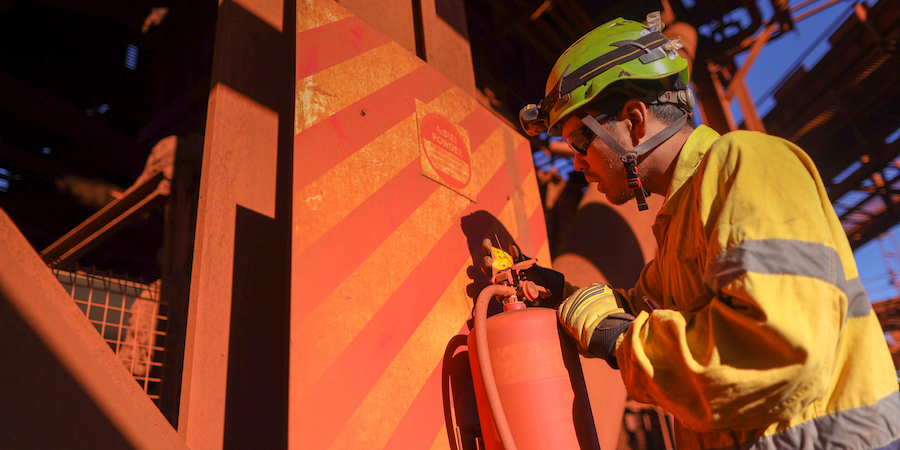Fire inspectors are the unsung heroes of fire prevention and suppression. On television, it’s the firefighters racing to the rescue in their trucks that garner all the attention. The most the viewing public typically sees of a fire inspector is a brief walk-on to inspect a burnt-out fire scene. Otherwise, fire inspectors are invisible.
Yet fire inspectors perform many vital duties: preventing fires from happening, minimizing the threat to people and property when they do occur, and detecting the causes afterward — as well as working to prevent similar blazes from happening in the future.
Aside from the unfortunate lack of recognition, fire inspectors face a variety of day-to-day challenges in the field. Here are the top five — and what can be done to help.
1. Challenging Work Environments
A fire inspector spends much of their time out in the field inspecting buildings and properties. Their mission is to prevent fires before they occur, which means looking for any potential causes and contributing factors before flames are actually sparked.
Get the Samsung DeX Study for Public Safety
Download the Public Safety Network's in-depth cost comparison on Samsung's DeX in-vehicle solution. Download Now
As a result, fire inspectors often find themselves working in rough and rugged conditions; crawling through all kinds of structures looking for possible trouble. The more derelict a building is — be it an industrial facility or a rundown residential unit — the more vulnerable it is to accidental fires.
2. Identifying and Logging Fire Hazards
The reason badly maintained buildings and properties are prone to fires is due to the combinations of potential hazards on site. These can include electrical wiring problems; broken fire detectors, alarms and sprinkler systems; accumulated hazardous materials and combustible waste; and inadequate/dysfunctional fire exits.
It is the fire inspector’s job to find these dangers and document them in a manner that is both precise and legally valid. This information needs to be legally sound to compel recalcitrant property owners to remedy identified problems, and be usable in court should a fire occur in the future.
3. Enforcing Complex Regulations
Every kind of structure and property is governed by building codes and other regulations intended to hold them to minimum safety standards. Yet many owners flout these rules, resulting in their properties being prone to fire while unequipped to protect the occupants inside.
The fire inspector is the person who identifies these code breakers and holds them to account. Therefore they must know the relevant laws, be able to spot code violations and document them accurately in the fire department’s database. And they must do so well enough for their conclusions to stand up in court.
4. Recommending Solutions
Fire inspectors don’t just look for problems — they come up with solutions to help code breakers and other violators bring their properties into compliance. This positive approach enhances fire safety in the community, while reducing dangers to firefighters and the public when fires do occur.
5. Fire Scene Investigation
A fire scene resembles a crime scene — and sometimes it is one. The fire department needs to determine what caused the fire and why it spread as it did, whether any person caused the fire intentionally, unintentionally or through neglect, and who will be responsible for damages and repairs through insurance or other means. If anyone was injured or killed by the fire, the urgency behind the investigation increases.
The fire inspector serves as the detective on the fire scene. Using their knowledge, they search for probable causes and document whatever evidence they find in notes, photos and videos. As fire scenes deteriorate over time — and since there is usually pressure to clear such scenes and start rebuilding as soon as possible, fire inspectors are expected to do their investigations as quickly as possible without missing anything.
Mobile Makes the Job Easier
Amid declining budgets and headcounts, fire services are under considerable pressure to fulfill fire inspection requirements on top of emergency call outs. Finding ways to be more efficient and effective on the job is essential.
Clear, accurate and detailed documentation is central to a fire inspector’s job. Adding the fact that their work is generally done outside of the office, it’s clear why mobile technology can be so helpful, provided the device in use is rugged, dust- and water-resistant, and able to work in all kinds of extreme conditions. A rugged tablet is ideally suited for the job, because it combines computing performance, a large screen and a handheld form-factor.
A good example of such a device is Samsung’s new Galaxy Tab Active Pro tablet. The Tab Active Pro is a rugged, 10.1-in. Android tablet that has been tested against MIL-STD-810G standards and is IP68 dust- and water-resistant. The Tab Active Pro is equipped with a 13MP forward-facing camera for capturing high-quality images of code violations or evidence at the fire scene. It also delivers laptop-like performance with 4GB of RAM, plus 64GB of onboard storage and a microSD card slot that can expand that up to 512GB.
The Tab Active Pro’s touchscreen works when wet, and when the user is wearing gloves. A fire inspector can even write or sketch on its screen using the included S Pen. The onboard battery runs for up to 15 hours, and can be swapped out with a spare battery as needed.
The Tab Active Pro also supports Samsung DeX, a platform that allows the user to connect to an external monitor, keyboard and mouse to power a full desktop experience. This means inspectors can complete their reports at the station or in their vehicle from the same device. Samsung works closely with leading public safety software providers to optimize their solutions for its portfolio of mobile devices and DeX. Plus, all data on the Tab Active Pro is protected by the built-in, defense-grade Samsung Knox platform.
Learn more about Samsung’s range of solutions to support the mobile first responder.








